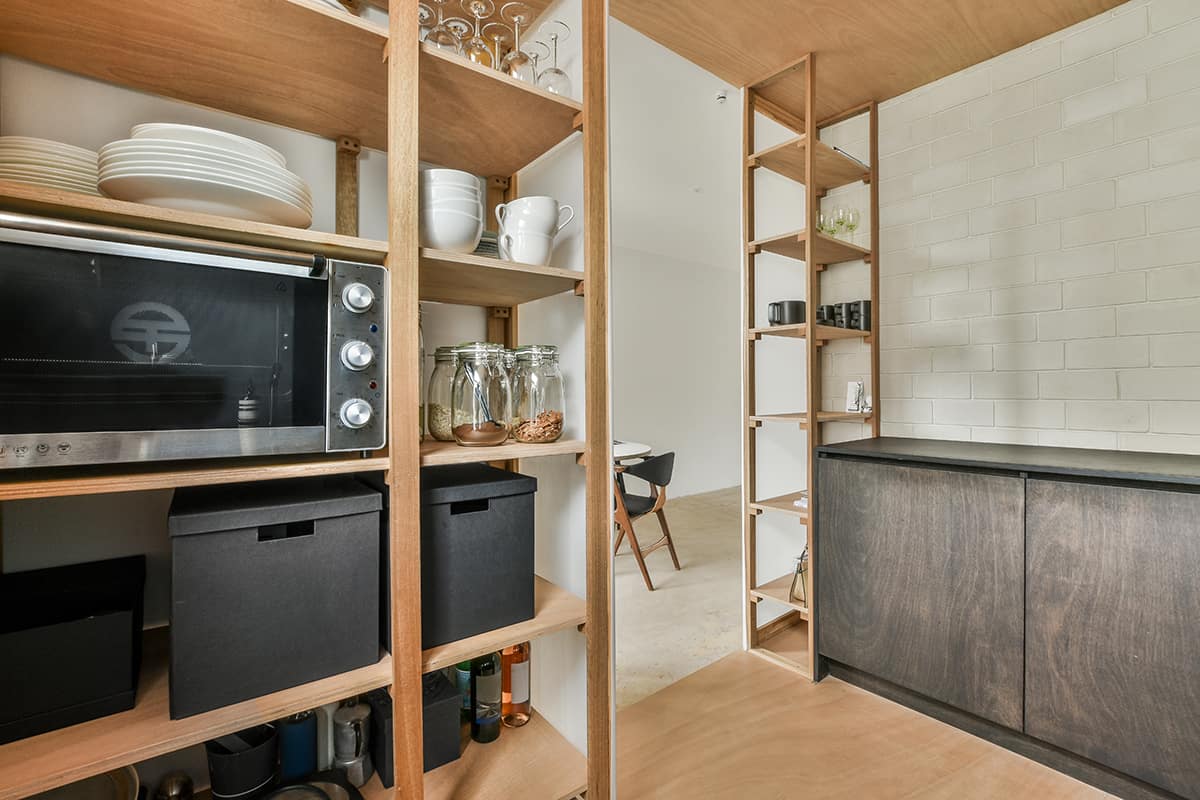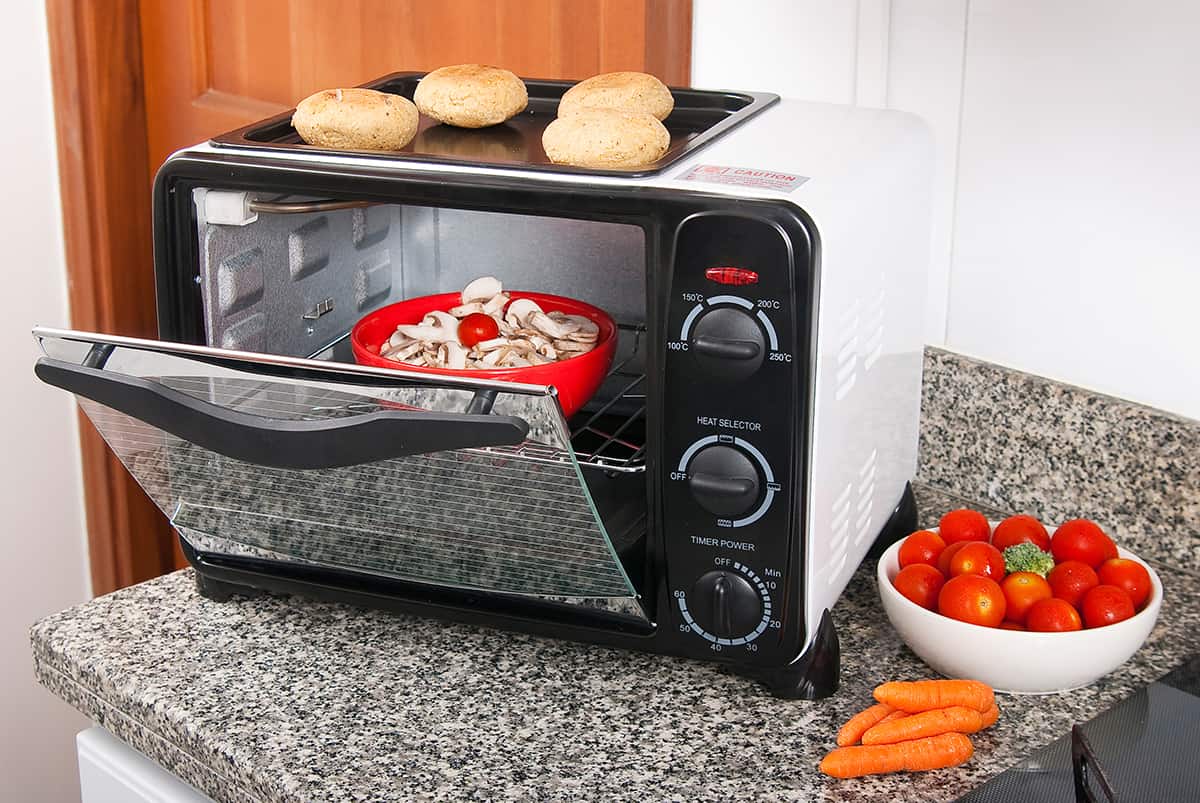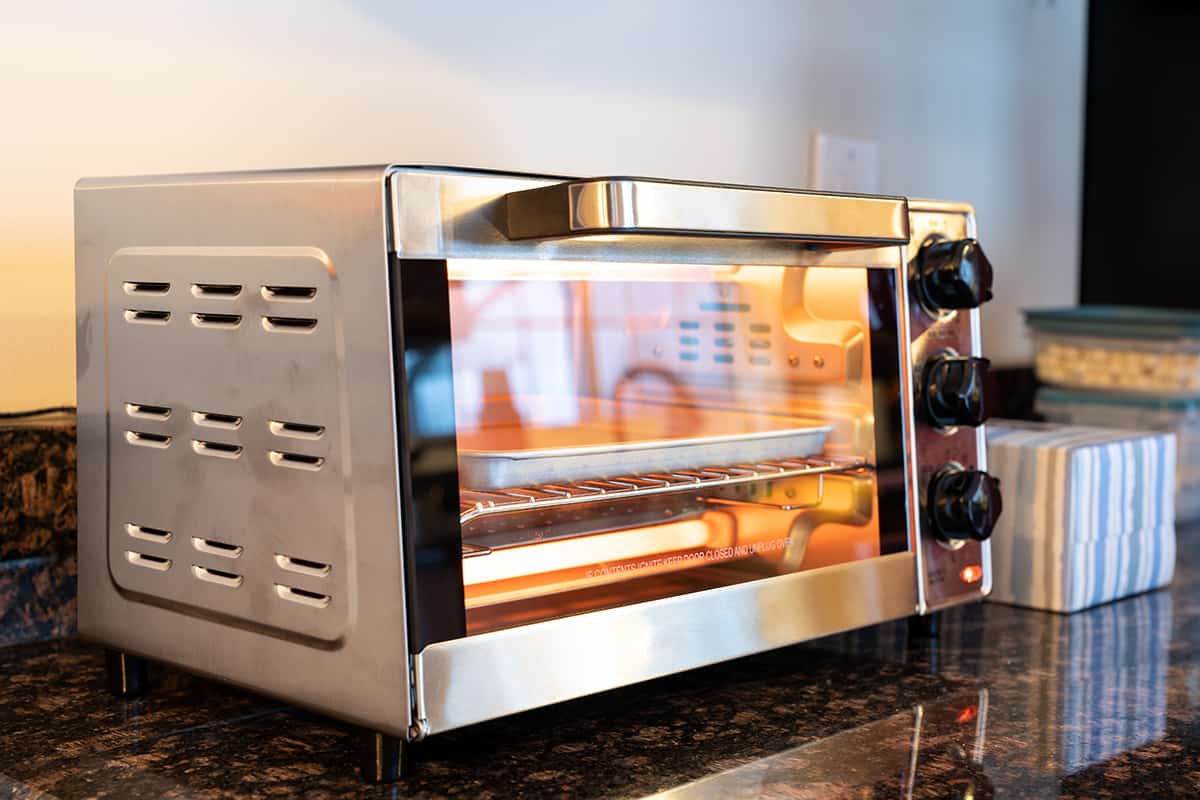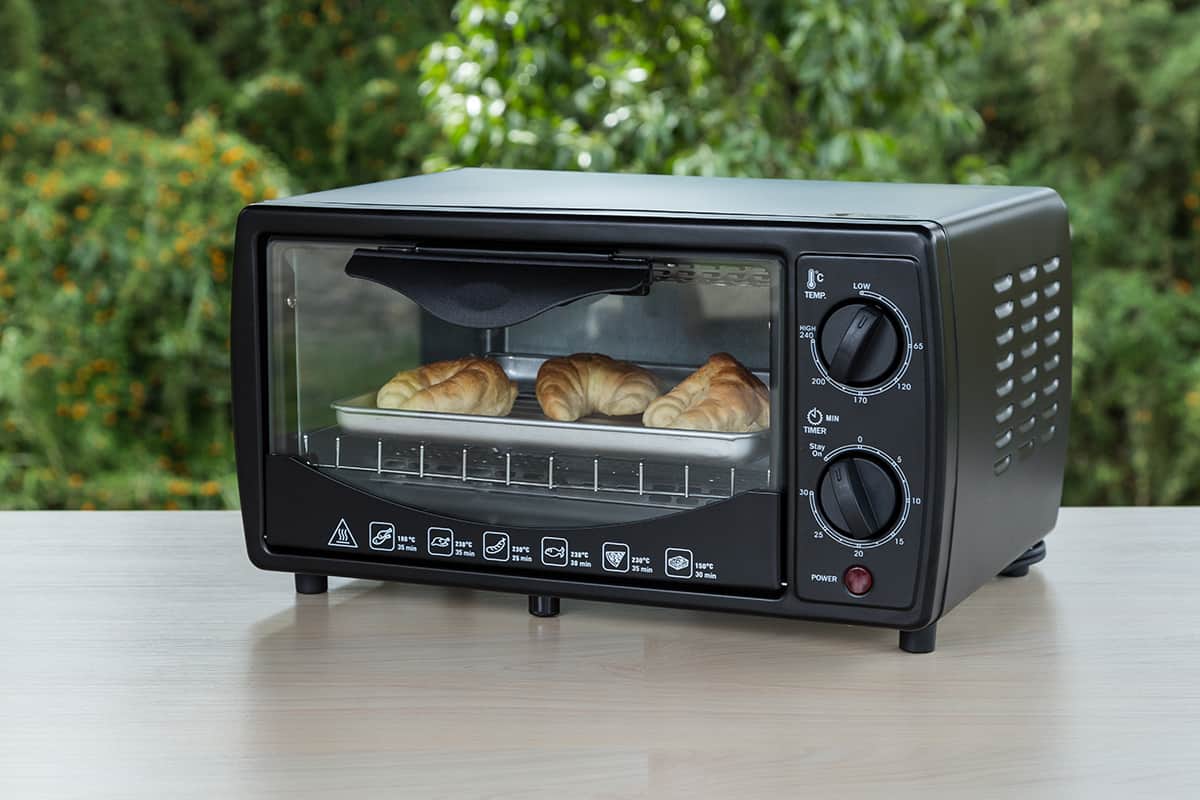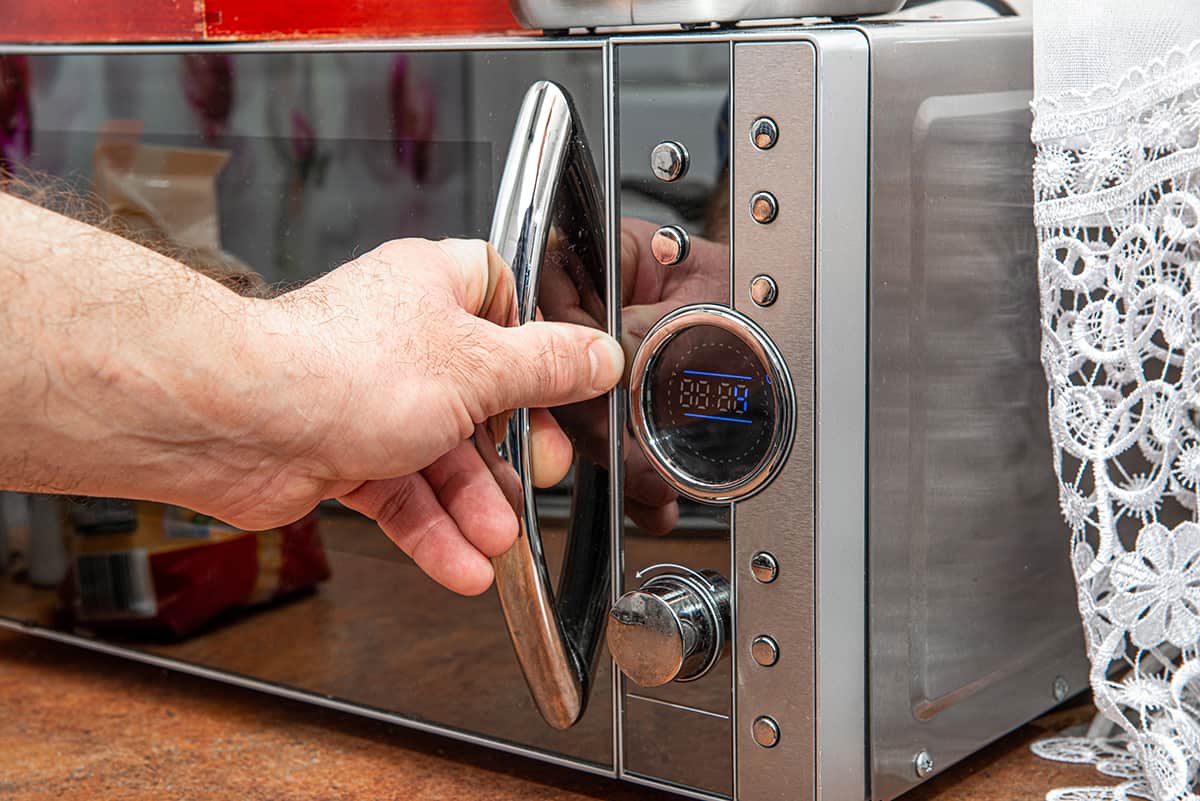Toaster ovens are essentially small versions of your main kitchen oven, and they are great for cooking small meals to save you from using your big oven. One of the biggest drawbacks of the toaster oven is that it takes up valuable countertop space.
If you don’t want a toaster oven permanently positioned on your kitchen counter, you could store it in a cabinet and just bring it out onto the counter when you want to use it, or you could install it in an open cabinet unit in a similar way to cabinet microwaves.
Here we explore which types of toaster ovens are suitable for keeping in a cabinet, and what safety precautions you will need to put in place.
Can Toaster Ovens be Stored in a Cabinet?
When toaster ovens are not in use, many people choose to store them in a kitchen cabinet. If you have spare space in a cabinet this makes a lot of sense, because it frees up the space on your countertop. However, if you use your toaster oven on a daily basis, then it can be a hassle to continually be moving the appliance in and out of a cabinet.
You should never use the toaster oven while it is confined inside a cabinet unless certain safety precautions have been put in place. Toaster ovens can reach high temperatures on the outside, which presents a fire hazard when used in a confined space.
Can Toaster Ovens be Fitted in an Open Cabinet?
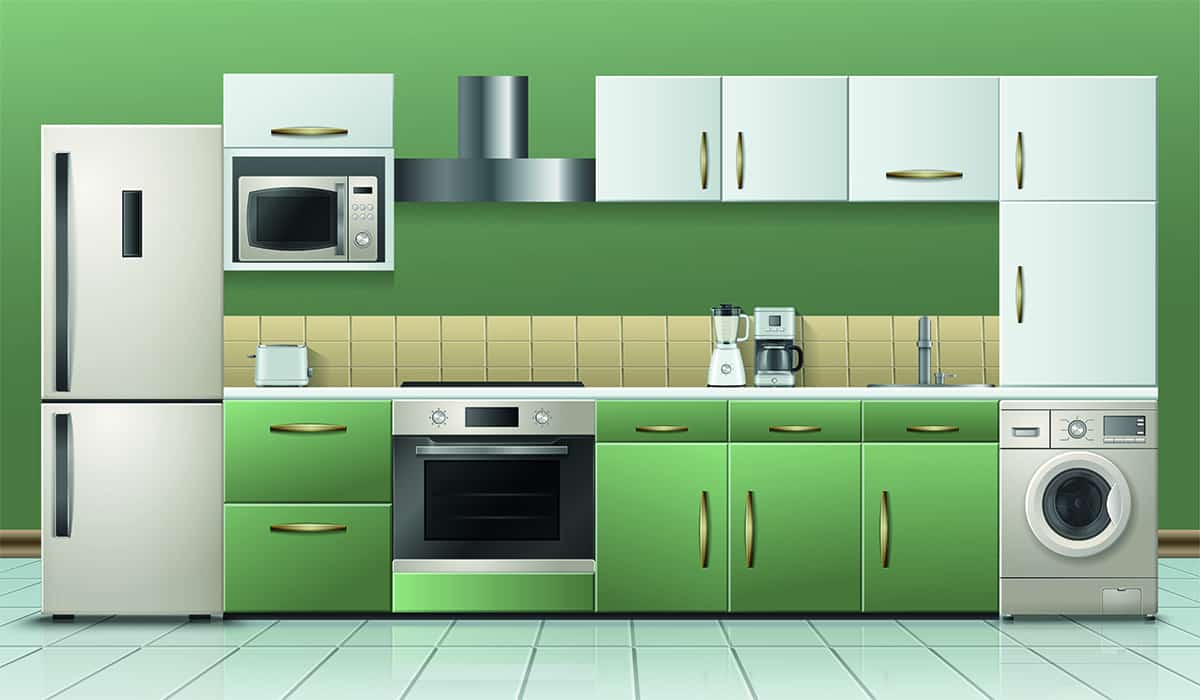
If you don’t want to keep your toaster oven on the countertop but you use it regularly, then installing it in an open cabinet is an option. Much like when microwaves are installed in open cabinets, you can install toaster ovens in a similar way.
The main difference here is that toaster ovens require a certain level of ventilation, while microwaves do not. This is because toaster ovens can get very hot to touch on the outside, and they can cause a fire to start if they get too close to their surroundings.
Do Toaster Ovens Get Hot on the Outside?
Toaster ovens can reach cooking temperatures of up to 500°F, and they have thin walls which means that even the outside of the toaster can get very hot while cooking. In fact, the exterior walls of a toaster oven can reach 85% of the cooking temperature, so if you’re cooking at 400°F then the outside of the toaster oven could be as hot as 340°F.
Typically the top of the toaster oven will be the hottest part, but every part of the external oven can get hot except for the handle. The reason for this is that toaster ovens do not have very much insulation like regular ovens. You can fit a regular oven inside an open cabinet, or for range ovens, you can slot them in right next to base cabinets without worrying about the cabinets getting too hot, and this is because ovens have plenty of insulation to stop them from getting hot on the outside.
The lack of insulation on a toaster oven means that they can present a fire hazard if they don’t have enough space around them. Toaster ovens should always have several inches of ventilation space around the back and sides, and they should not come into contact with other items.
For example, if you have another appliance near your toaster oven and the power cable is pressed against the side of the oven, the outside walls of the toaster oven can actually get hot enough to melt through the cable. If you plan to install your toaster oven in a cabinet, then ventilation needs to be a serious consideration to ensure your safety.
How Much Space Does a Toaster Oven Need?
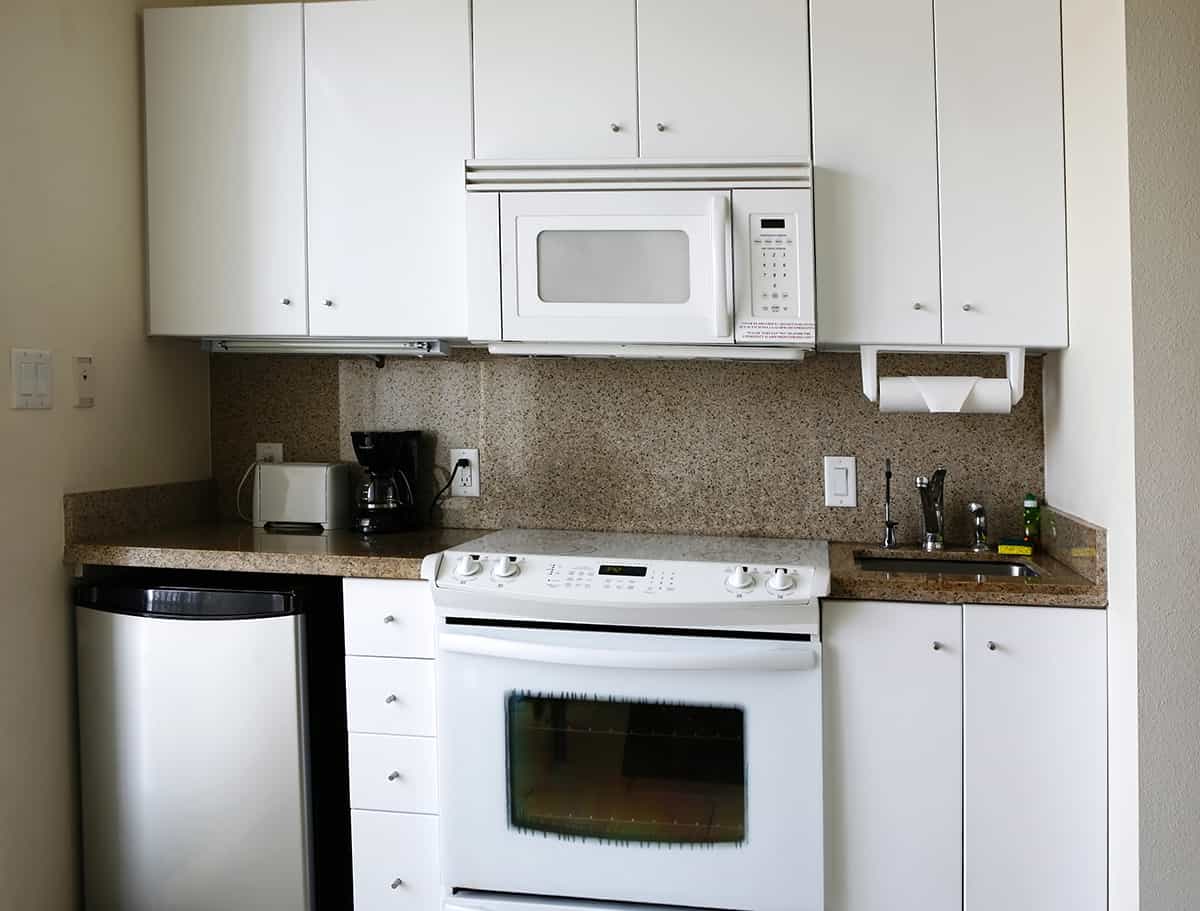
Toaster ovens need a certain amount of space around them for ventilation, and this is also to keep other surfaces safe from melting, scorching, or catching fire when the toaster oven is being used. If you keep your toaster oven on the countertop, then it should be positioned several inches away from any nearby walls, whether they are at the sides or at the back of the toaster oven. The toaster oven should not be close to any sources of water, and it should not come into contact with any other objects.
If you are installing your toaster oven in an open cabinet, then a cabinet that is open at both the front and on one side is ideal. This will create the safest solution for a toaster oven. The toaster oven should have a gap of 4 inches between the back of the appliance and the back wall, and a gap of 4 inches between the side of the appliance and the remaining side wall.
It will also require a distance of 6 inches between the top of the toaster and the overhead cabinet. This is because the top of the toaster oven is the part which will become the hottest during use. Never place anything on top of a toaster oven, as this presents a significant fire risk.
If you do not have a suitable cabinet with both an open front and open side, then you can install a toaster oven in a standard open cabinet, but increase the distance on either side to 6 inches for improved ventilation.
How to Protect Cabinets from Toaster Ovens
If you are installing a toaster oven in an open cabinet, then as long as you have allowed the necessary space around the appliance, your cabinet will be safe from scorch marks or any damage caused by excess heat. However, if you want to take extra precautions to ensure safety and prevent potential damage to your cabinets, then you can install additional protection.
Heat guard protection comes in a roll with an adhesive side which you stick to the surface of your cabinets. This features a heat protective layer which will further guard your cabinets against any heat-related damage. Using a heat guard is a particularly good idea if your cabinets are coated in resin or vinyl because these are more vulnerable to issues with high temperatures.
Cool Touch Toaster Ovens
Ensuring good airflow around your toaster oven is essential for safety, but it can ruin the sleek, custom look of a kitchen. If you don’t want to have so much empty space around your toaster oven, you can opt for a cool-touch toaster oven. Cool touch toaster ovens are designed to remain cool on the outside, which means the risk of heat damage to cabinets is significantly reduced.
With a cool touch toaster oven, you won’t need to maintain such a big gap around the appliance, and you will also benefit from greater peace of mind that your toaster oven isn’t going to be the cause of fire hazards. Cool-touch toaster ovens are widely available but can cost a little more than standard toaster ovens.
If your toaster oven is within reach of children, then the cool touch feature is going to be priceless because it will prevent curious kids from getting their fingers burnt on the outside of the toaster oven.
